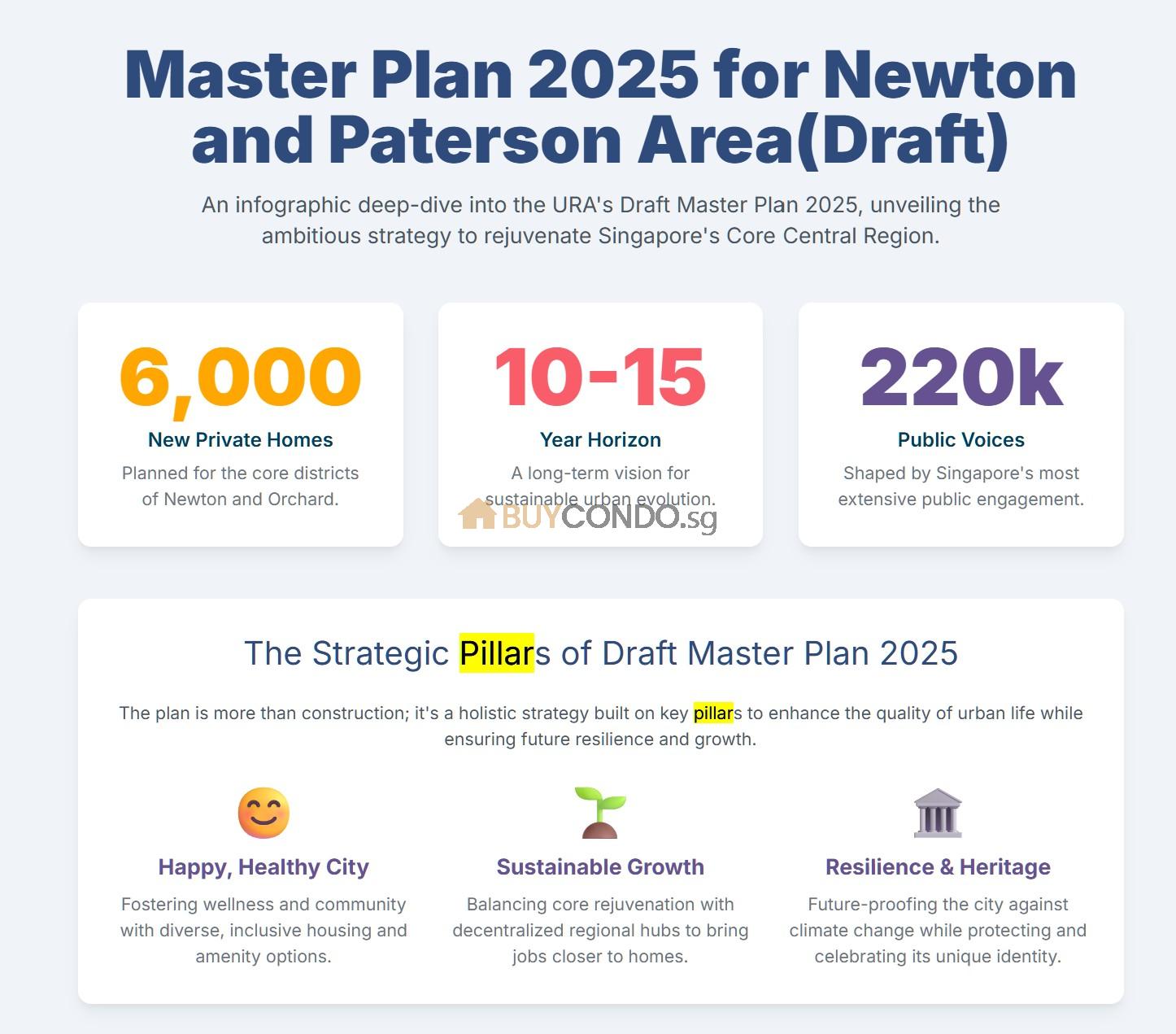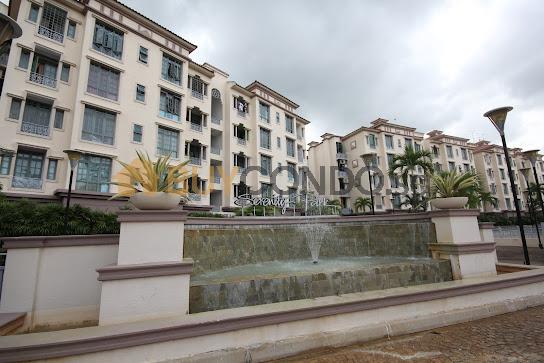How the Gross Floor Area affects prices of new launch condos
How the Gross Floor Area affects prices of new launch condos, including an analysis of historical changes, case studies, the influence of GFA on property prices, the harmonization of GFA definitions, the role of BCA Green Mark, and developer strategies amidst GFA changes.
Key takeaways
🏗️ The gross floor area (GFA) determines the total space a developer can build and sell, impacting the number of units in a project.
🏗️ The change in URA guidelines led to a shift in property design, with developers focusing on private and enclosed spaces rather than bay windows.
🏙️ The increase in average unit size requirement has led to fewer units being built, resulting in less profit for developers.
🌿 The new URA guideline aims to promote environmental friendliness by offering incentives for using lesser aircon and encouraging natural ventilation.
🏗️ The new URA guideline change will impact developers’ profit margins and pricing strategies.
Milestones of URA Guidelines Changes
The URA guideline changed in 2009, and bay windows became part of the GFA. As a result, developers stopped building bay windows and started constructing more private and closed spaces and roof terraces, which are not counted in the GFA.
In 2013, the URA guideline changed again, and all roof terraces, private and closed spaces, and balconies became part of the GFA. To encourage developers to build balconies, URA offered an additional 10% bonus on top of the original GFA.In 2018, Due to the increasing size of new developments, people complained that we were moving towards smaller units like those in Hong Kong. To address this issue, URA increased the average unit size requirements, from 70 square meters to 85 square meters.
The total GFA remained the same, but the number of units developers could build decreased. This meant less profit for developers. Additionally, the previous 10% bonus for balcony space was reduced to 7%, but URA still offered 10% if the developer could achieve the BCA green mark to promote environmental friendliness. The new developments now come with sky gardens, free fans, and metal nets to encourage natural ventilation.
Recently, URA increased the government land sale supply to the highest since 2014. It is speculated that with the lower land price, the selling price may be lower as well. Developers used to take advantage of the fact that aircon ledges were not included in the GFA and build larger ones. However, there is a new URA guideline change that dictates that aircon ledges will eat into the GFA, which means that developers will no longer build oversized ledges.

Gross Floor Area (GFA) and Its Impact on New Launch Condo Prices
Gross Floor Area (GFA) is a critical determinant of new launch condo prices, exerting a direct influence on the valuation and market positioning of these properties. In essence, GFA encompasses the total floor area within the building envelope, including basements, mezzanine floors, and voids, thereby playing a pivotal role in defining the usable space and overall value of a property. For instance, a larger GFA often translates to a more expansive and functional living space, which is highly desirable in the real estate market, consequently contributing to the premium pricing of such properties.
Moreover, the involvement of the Urban Redevelopment Authority (URA) in urban planning, development, and property pricing reinforces the pivotal role of GFA in the real estate landscape. As a central player in shaping property guidelines and regulations, URA’s influence further underscores the criticality of staying informed about GFA-related changes and their potential impact on property prices. Therefore, having a comprehensive understanding of GFA and its implications is essential for all stakeholders, from developers and real estate professionals to prospective buyers and investors, enabling them to make well-informed decisions in the ever-evolving real estate market.
Additionally, historical changes in GFA, such as the 2009 Baywindow, 2013 Roof Terraces, and private enclosed spaces, have left a lasting imprint on property prices, reflecting the adaptability of the real estate market to GFA-related modifications. For instance, the introduction of Baywindows in 2009 led to an increase in property prices due to the additional usable space it provided, thus enhancing the overall value of the condos. Similarly, the 2013 inclusion of Roof Terraces and private enclosed spaces resulted in property pricing adjustments, underscoring the market’s responsiveness to GFA-driven changes and buyer preferences. These historical examples serve as compelling evidence of the tangible influence of GFA on property values and the market’s capacity to adapt to GFA-related adjustments.
Understanding the Influence of GFA on Property Prices
When delving into the influence of Gross Floor Area (GFA) on property prices, it becomes evident that this metric holds substantial sway over the valuation of new launch condos.
GFA, defined as the total floor area within the building envelope, including basements, mezzanine floors, and voids, plays a critical role in determining the market price of new launch condos, as it significantly contributes to the overall living space and amenities offered within a development.
Furthermore, GFA calculations are not static and can be influenced by various factors, including changes in floor area definitions, which directly impact GFA and, subsequently, property prices and developer strategies.
The fluctuation in GFA due to evolving definitions and measurements is a key consideration for developers and buyers when assessing property values and making investment decisions. Therefore, understanding the dynamic relationship between GFA and property prices is indispensable for navigating the real estate market effectively.
Moreover, the new shared definition of GFA by URA, BCA, SLA, and SCDF as of June 2023 marks a significant shift in the measurement and calculation of GFA for new launch condos and other residential properties. This standardization involves measuring floor areas to the middle of the wall, including all strata areas under the total GFA count, and excluding void spaces from the GFA calculation. The anticipated impact of the harmonized GFA definitions underscores the need for stakeholders in the real estate industry to stay informed and proactive in responding to these changes. By staying abreast of the revised GFA guidelines and understanding their implications, developers and homebuyers can make well-informed decisions when it comes to property pricing, investment, and market participation.
Case Studies: GFA’s Impact on New Launch Condo Pricing
Real-world examples serve as compelling evidence of how Gross Floor Area (GFA) has influenced the pricing of new launch condos. One notable case study involves the incorporation of the 2013 Roof Terraces, which resulted in a notable surge in property prices due to the additional usable space created by these features. The inclusion of roof terraces in the GFA calculation significantly enhanced the value of the properties, leading to a noticeable increase in pricing. This example underscores the direct correlation between GFA considerations and property valuations, showcasing how specific GFA components can impact the overall pricing of new launch condos.
Another compelling case study is the impact of private enclosed spaces on property prices. When private enclosed spaces were incorporated into the GFA calculation, it resulted in a notable uptick in the pricing of new launch condos. The added usable area contributed to the perceived value of the properties, thereby influencing the pricing strategy adopted by developers. This case study exemplifies how GFA-related changes directly influence property pricing strategies, reflecting the market’s responsiveness to GFA-driven adjustments and its implications for property values.
Moreover, the anticipated impact of GFA harmonization on property prices is multifaceted and holds implications for various aspects of the real estate market. The upcoming harmonization of Gross Floor Area (GFA) definitions across different agencies is expected to have a profound impact on property pricing dynamics, particularly in relation to land bid prices during Government Land Sales (GLS). Therefore, understanding the anticipated impact of GFA harmonization on property prices is essential for making informed decisions in the real estate market, whether it pertains to property investments, development strategies, or market projections.
The Role of the BCA Green Mark in GFA and Property Prices
The BCA Green Mark, a green building rating system established by the Building and Construction Authority (BCA) in Singapore, plays a pivotal role in influencing property prices through its impact on Gross Floor Area (GFA). This system focuses on promoting sustainable and environmentally friendly building practices, thereby contributing to the overall valuation of new launch condos. The BCA Green Mark incentivizes developers to adhere to sustainable building standards, encouraging the integration of eco-friendly features and technologies into new developments. This can result in a positive influence on the GFA of properties, as sustainable features such as energy-efficient designs, water-saving measures, and the use of environmentally friendly materials directly contribute to the calculation of GFA. As a result, properties with higher BCA Green Mark ratings may command higher valuations due to their enhanced sustainability and eco-friendliness, ultimately impacting their pricing in the real estate market.
For example, a new launch condo that incorporates solar panels, energy-efficient lighting, and water-saving fixtures to achieve a high BCA Green Mark rating may be perceived as more valuable and desirable by potential buyers. These sustainable features not only contribute to a reduced environmental footprint but also positively impact the GFA calculation, as they enhance the overall utility and efficiency of the property. Consequently, the property may be priced at a premium compared to similar developments with lower sustainability ratings, reflecting the direct correlation between the BCA Green Mark, GFA, and property prices. This example underscores the tangible influence of sustainable building practices on the valuation and pricing of new launch condos, further underscoring the significance of the BCA Green Mark in shaping the real estate landscape.
Moreover, the BCA Green Mark serves as a key driver in shaping the sustainable development of properties and influencing their pricing through its impact on GFA. By encouraging developers to incorporate sustainable features, the BCA Green Mark directly contributes to the overall appeal and valuation of new launch condos, reflecting the growing importance of sustainability in the real estate market.
Developer Strategies Amidst GFA Changes
Developers are encountering significant challenges as a result of GFA changes, with a notable impact on their profit margins and additional costs in the form of higher Land Betterment Charges. These changes are prompting developers to reevaluate their strategies and consider potential adjustments to navigate the evolving landscape of property development. In response to GFA alterations, developers may explore various avenues to mitigate the impact on their projects, including potential price adjustments and a reassessment of their development plans. This highlights the dynamic and adaptive nature of the real estate market, where developers are continuously refining their approaches to align with changing regulations and market conditions, particularly those related to GFA considerations.
For instance, in light of the increased minimum unit size requirements in 2018, developers may have restructured their floor plans and unit configurations to comply with the new regulations while still maintaining the attractiveness and marketability of their projects. This demonstrates the proactive measures taken by developers to adapt to GFA-related changes and align with the evolving property guidelines. Similarly, with the harmonization of GFA definitions set to take effect in 2023, developers are likely to recalibrate their development strategies to account for the standardized measurements and their potential implications on project viability and pricing. These adjustments underscore the strategic acumen and adaptability of developers as they navigate the complex interplay between GFA and property prices, ensuring their projects remain competitive and responsive to market demands.
In conclusion, the evolving landscape of GFA regulations and measurements presents developers with both challenges and opportunities, shaping their strategies and approaches in the dynamic real estate market. This underscores the need for developers to remain agile and innovative in response to GFA-related changes, reflecting the resilience and adaptability of the real estate industry in addressing evolving regulatory frameworks.

Anticipated Impact of GFA Harmonization on Property Prices
The anticipated impact of GFA harmonization on property prices is multifaceted and holds implications for various aspects of the real estate market. The upcoming harmonization of Gross Floor Area (GFA) definitions across different agencies is expected to have a profound impact on property pricing dynamics, particularly in relation to land bid prices during Government Land Sales (GLS).
For example, the recent successful bid by Sim Lian Group for a land site at Jalan Tembusu at a rate of $1,069 per square foot per plot ratio (psf ppr) reflects the potential influence of GFA harmonization on land bid prices, as it was approximately $300 psf ppr cheaper than neighboring projects.
Furthermore, the anticipation of a potential decline in land bid prices post-June 2023, due to GFA harmonization, has raised concerns about developer confidence and their strategies for future property developments. The interconnected dynamics between GFA harmonization, land bid prices, and property values are expected to shape the future trajectory of the real estate market, prompting stakeholders to closely monitor and adapt to the evolving landscape of property pricing dynamics.
Moreover, the forthcoming harmonization of GFA definitions underscores the need for industry professionals, potential homebuyers, and other stakeholders to stay informed about the evolving GFA definitions and their potential implications on property values.
Understanding the anticipated impact of GFA harmonization on property prices is essential for making informed decisions in the real estate market, whether it pertains to property investments, development strategies, or market projections. Therefore, staying abreast of these developments can empower individuals to navigate the real estate landscape effectively and make informed decisions regarding property transactions and investments.
In Conclusion : How the Gross Floor Area affects prices of new launch condos
it is evident that the Gross Floor Area (GFA) plays a crucial role in determining the prices of new launch condos in the real estate market. The direct influence of GFA on property pricing is a reflection of the usable space and overall value of a property, making it an essential factor for both developers and prospective buyers to consider. Historical changes in GFA, such as the 2009 Baywindow, 2013 Roof Terraces, and private enclosed spaces, have significantly impacted property prices over the years, showcasing the adaptability of the real estate market to GFA-related modifications.
Therefore, readers are encouraged to explore the Urban Redevelopment Authority (URA) website for further insights into urban planning, property guidelines, and the evolving influence of GFA on property pricing. By staying informed, stakeholders can make well-informed decisions and navigate the real estate market effectively in light of GFA-related changes.















